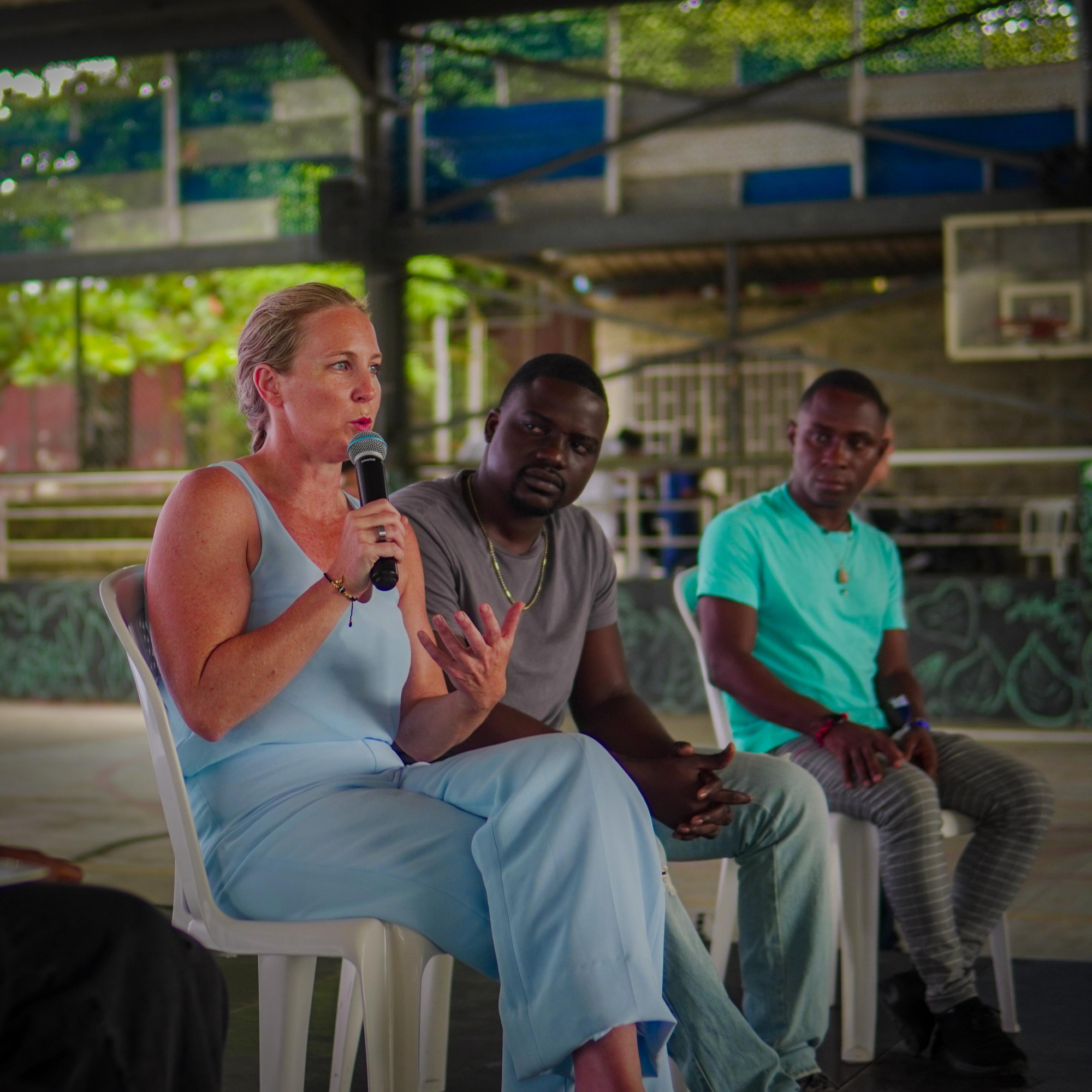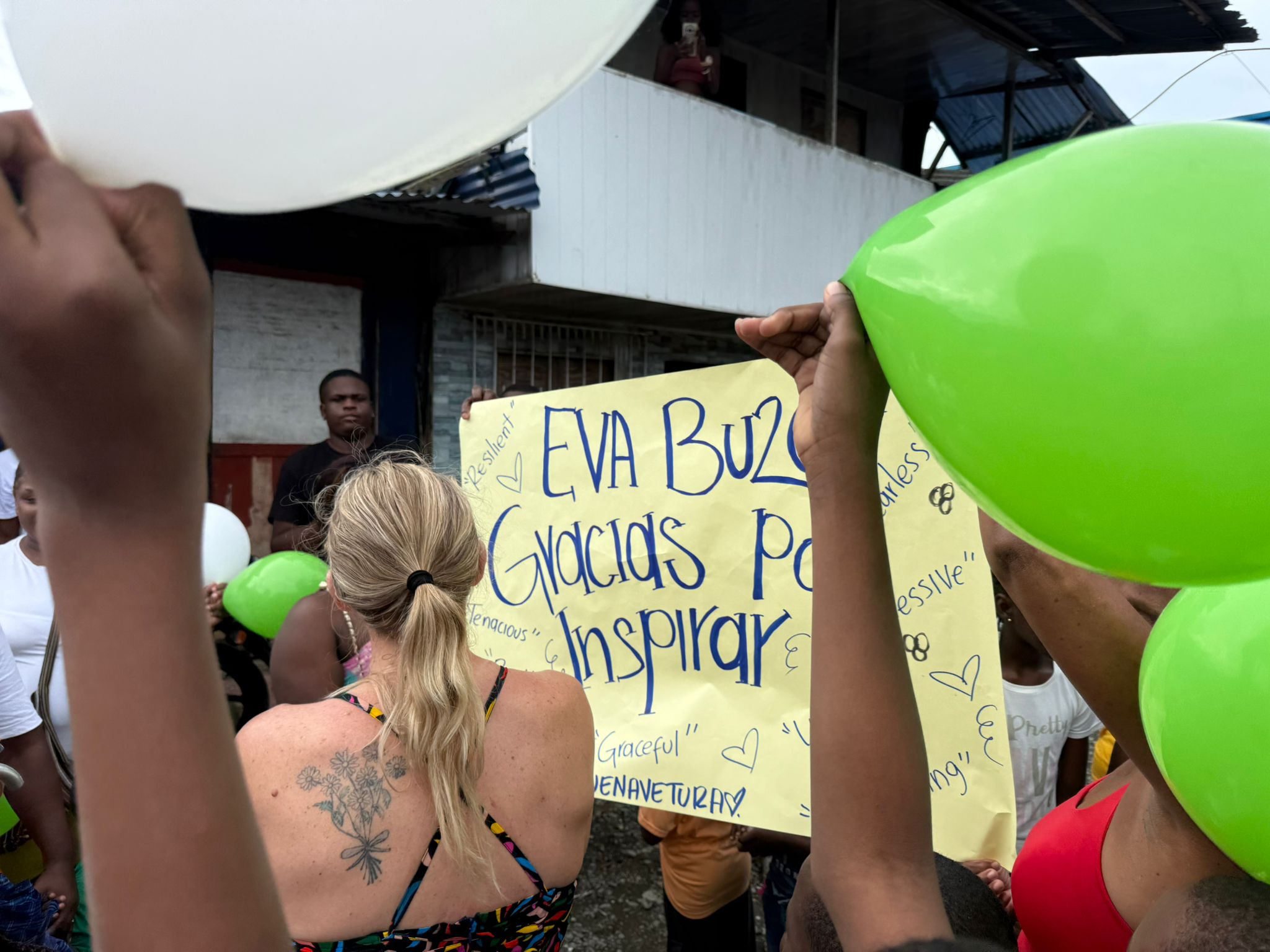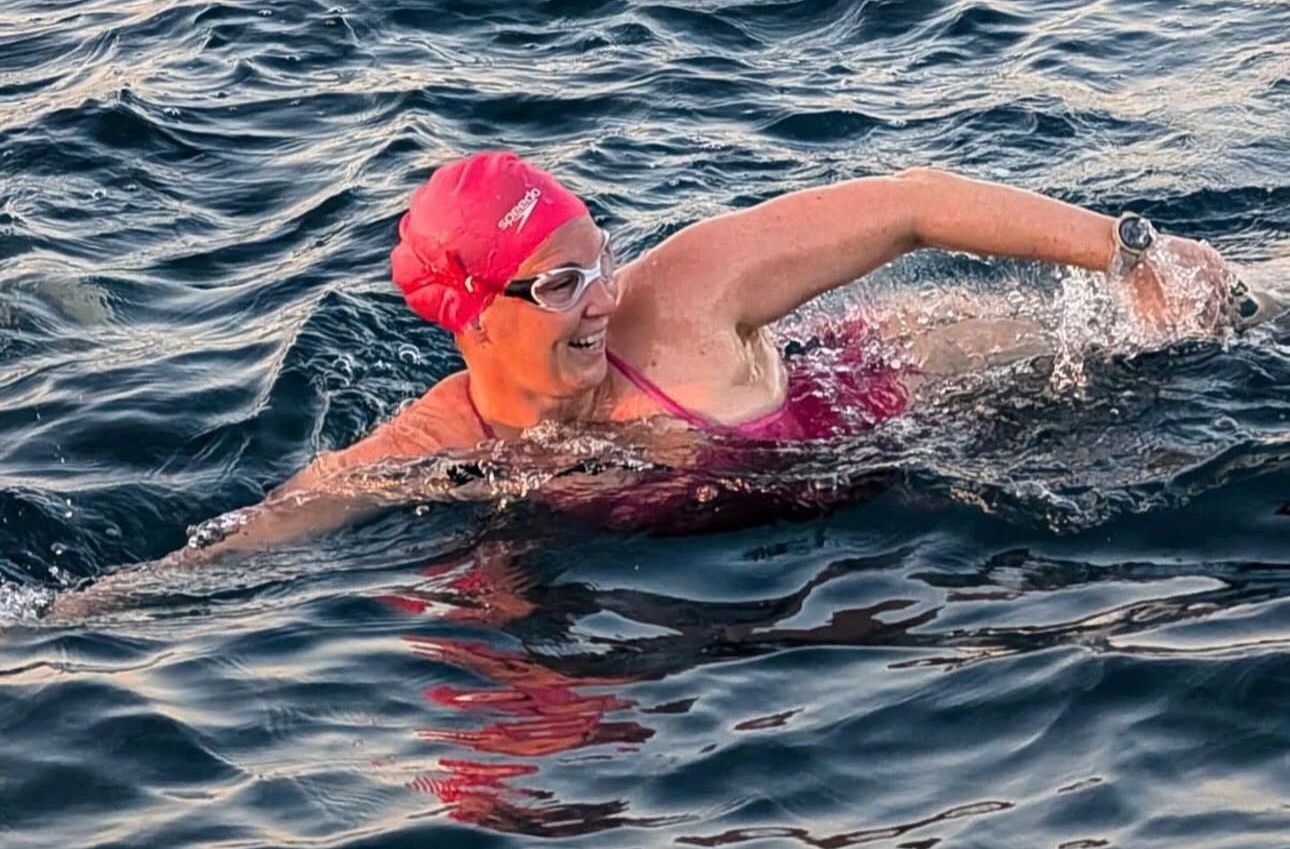Eva Buzo, an Australian athlete who swam from Juanchaco to Buenaventura, shares the reasons behind her journey.

Last weekend, in an event organized by social organizations, the Catholic Church, and the Open Society Foundations network, Australian swimmer Eva Buzo swam for more than ten hours between Juanchaco and the Buenaventura boardwalk, Colombia's main port. According to the Valle del Cauca Governor's Office, her journey, called "Swimming for Resilience," allowed her to show the world another side of this region of the country.

The march was held in protest of the escalating violence in this region. Photo: Courtesy.
This event, according to Buzo, was held in protest of the escalating violence in this southwestern region. At the time, he stated that the tour taught him about resilience and resisting obstacles.
The swimmer's achievement was also recognized by former Foreign Minister Luis Gilberto Murillo, who noted that events like this help raise awareness of an area that "has been stigmatized by violence." He added: "This sporting feat embodies the dignity, resilience, and leadership that characterize this region of Colombia."
When Buzo arrived at the Malecón, the community welcomed her with culinary, cultural, and folklore samples typical of this region. Additionally, on Monday, the Australian visited the multimodal center supported by the Open Society Foundations in the Puente Nayero community, where residents and community leaders thanked the swimmer for her achievement and explained how they resist violence.

The community welcomed Eva Buzo, thrilled by this achievement. Photo: Courtesy.
EL TIEMPO spoke with Eva Buzo about her preparations, where the idea of coming to Colombia came from, and the difficulties she faced along the way.
Where did the idea of coming to swim 40 kilometers in Buenaventura, Colombia, come from? The motivation behind this swim came from an invitation I received from civil society groups in Buenaventura, organizations committed to combating violence and building peace in the region. It was an opportunity to take on a physical endurance challenge that could symbolize resilience. Ultramarathon swimming is an extremely demanding sport, and this swim allowed me to highlight the beauty of the region, from Juanchaco to Buenaventura. It was something many considered impossible, especially due to a section known as El Paso de Tigre. Many people say it can't be crossed. The conditions were undoubtedly difficult, but it's all about persisting, keeping moving forward, and sometimes you can achieve what others think is unattainable. That's the message the people who work with the community wanted to share: to give a message of inspiration and celebrate the incredible work they've done there. It was an honor for me to be able to contribute to that with this swim.
You mentioned that you faced some challenges along the way, which ones specifically? Ultramarathon swimming requires a tremendous level of mental focus. One of the biggest challenges of this journey was the constantly changing conditions. I had to constantly adjust my mental plan: how long I thought the course would take, how I was going to approach it, and whether I actually felt I could finish it. The bay between Juanchaco and Buenaventura has a specific shape that causes the tides to constantly change. That's why you have to be very strategic: swimming with the tide, not against it. For example, near the end, I was only 3 km from the finish line, but the tide changed. One moment I was swimming at 5 km/h, and suddenly I was barely making any progress. It became almost impossible to finish. That's where the ability to adapt comes in. Nothing went exactly as planned, but that reflects real life; you can have all the plans and goals in the world, but reality throws unexpected challenges your way. What matters is how you adapt. My team and I had to constantly readjust our expectations throughout the course.
How long have you been contacted by Buenaventura civil society groups? What was the preparation like? I met someone from Buenaventura about a year ago, shortly after crossing the English Channel in an 11-hour swim in 13°C waters. We were chatting about that experience in icy waters when he asked if I'd consider doing a tour in Buenaventura. He told me about the beautiful beaches in the region and said the resilience required for this sport could have a real impact on the community. I replied, "Sure, I'd love to." From there, the idea started to take shape. I'm an ultramarathon swimmer, so I'm always training. In August of last year, I did a 92km swim from Italy to Albania. I then took a break, but resumed training at the end of last year. I'm also a lawyer by profession, so I have a fairly demanding job. I usually swim five times a week and also spend quite a bit of time at the gym.

Eva Buzo arriving at the Buenaventura boardwalk. Photo: Courtesy.
Yes, absolutely. Once the idea began to take shape, we began building a team. My contact connected me with people in Colombia and Buenaventura who helped me organize the trip. We had weekly meetings, where we discussed the purpose of the event, sea conditions, logistics, and the work civil society groups were doing in the region. During this process, I developed a very close relationship with people in Buenaventura. Honestly, this was one of the most organized trips I've ever taken. In some places, organizing an event like this can be very complicated, especially where it's not so common. But the team in Buenaventura did an extraordinary job.
One thing that really stands out is the name of the course: “Swimming for Resilience.” Why did you choose this particular term? The person I initially met was Hugo Tovar, director of security and rights at the Open Society Foundations. He is from Buenaventura and is deeply connected to the issues facing the community. He also works closely with local organizations that promote peace and human rights. For Hugo, this tour was a passion project, a way to showcase the resilience of his community. He knows firsthand the challenges people have faced, but he also knows how strong and inspiring the people of Buenaventura are. During this experience, I had the privilege of meeting many people who shared with me their culture, food, traditional dance, landscapes, and the sea. Buenaventura is a place that deserves to be recognized. I am very happy to have been part of this celebration of resilience and all that Buenaventura has to offer.
Since you mentioned the local community, how were you received at the end of the tour? I was absolutely amazed. I'd never received such a welcome after a swim. Even when I crossed from Italy to Albania, where I have a family connection through my grandfather, the reception wasn't even close to what I experienced in Buenaventura. It shows how united people are around this message of peace and resilience. When you give a community the opportunity to share their stories and strength, everyone joins in with enthusiasm. I felt so proud that this swim could provide that space for celebration.

The athlete swam for more than 10 hours from the beaches of Juanchaco. Photo: Valle del Cauca Governor's Office
Buenaventura is a community that has a lot to be proud of and deserves to be celebrated. I don't think I have a message for them, but I do have a message about them: it's an extraordinary place. From a sporting perspective, this course was technically challenging, which made it very interesting. I was the first person to attempt it, but I hope I won't be the last. I hope Buenaventura becomes a recognized destination for open water swimming. It's a difficult route, but I've already proven it's not impossible. Perhaps that's the message: people often believe something is impossible until someone proves otherwise. I've failed on other courses; I've failed professionally. Failure is fine, but the real failure is not trying, because you never know; you might surprise yourself.
You mentioned your trip between Italy and Albania. Do you have other routes in mind? I always have a list of dream tours, but the real challenge is organizing the logistics. What I'd most like is to receive invitations like this one. Sometimes a tour is just that, but this experience was much more special. If I can support civil society groups that are working hard in their communities, fighting for peace and ensuring their members are defending their rights, I'd really like to be a part of that. I'm open to ideas. But if no new invitations arrive, perhaps I'll return to other personal goals.

Eva Buzo was very proud of her journey. Photo: Courtesy.
ANGIE RODRÍGUEZ - TRAVEL EDITORIAL - @ANGS0614
eltiempo





